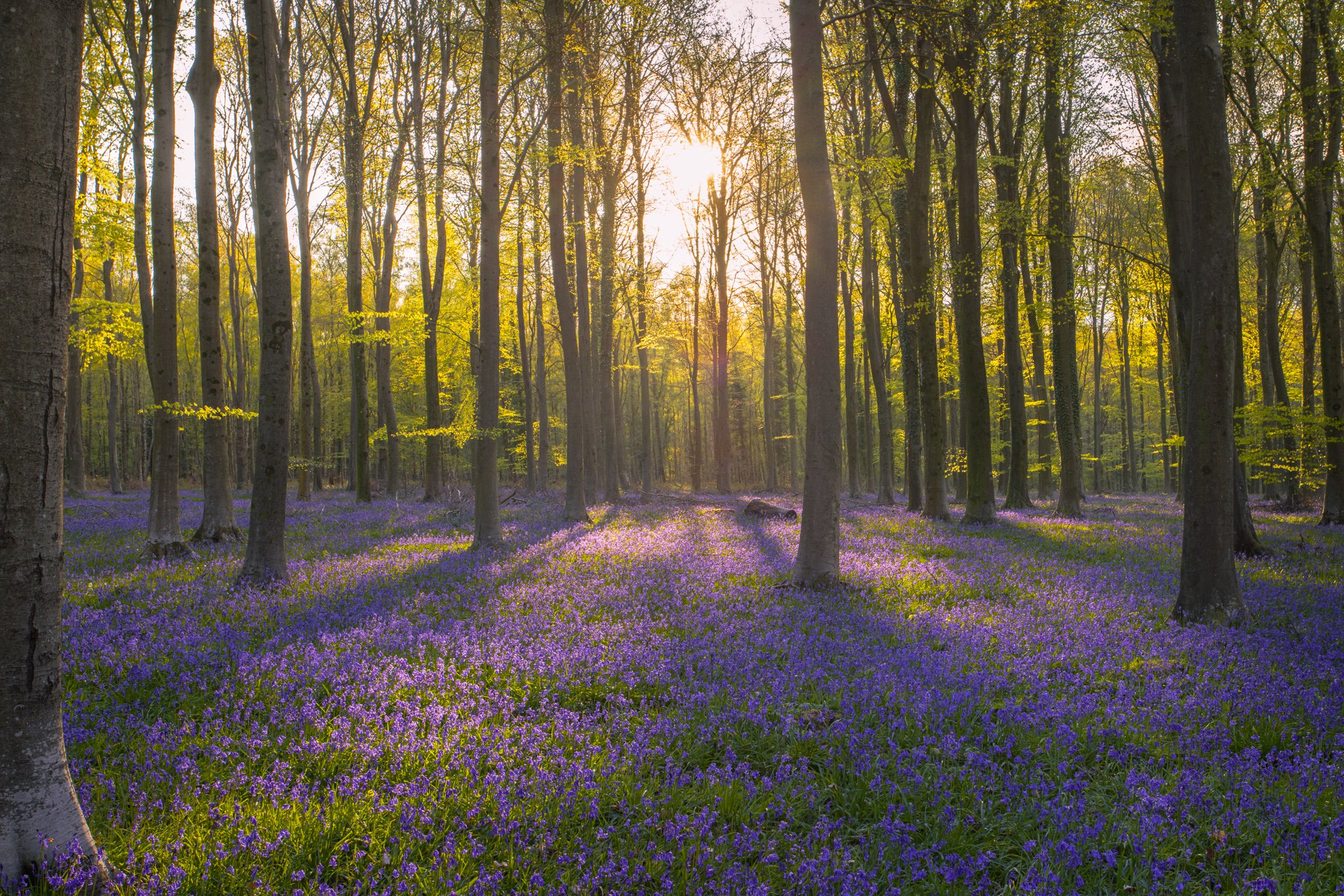How to take great photographs of bluebells
There is always a lot of hype when the bluebells come into flower and carpet the forest floors and rightly so, they lift to the woods into something really magical and flood our senses. That said, they are a tricky subject to photograph and I’m always seeing posts about how disappointed others are with their bluebell shots. So I’ve decided to share a few tips that I think might help.
Look for paths and breaks among the flowers that lead the viewer through the scene.
Keep an eye out for certain trees that might work as a natural frame. These can help place the viewers attention to a paticular area within the image. Fallen branches and toppled trees also make fabulous subjects among the bluebells.
Head out early for sunrise on a clear day to get those lovely long shadows and patches of dappled light. (Head to the edge of the woods to get the sun coming through the trees, if the woodland is dense and you’re in the middle you won’t notice the sun until long after it’s up, missing the best of the light.)
Use a tripod and have your camera above chest height to give the most natural view to the image.
Try to avoid having too much sky in the photograph, it’ll be brighter than the bluebells and detract from the scene.
Look for patches of light that fall on a tree stump, intersting detail, or new leaves.
Search for a subject that leads the eye.
Zoom lenses work great for compressing the scene and creating depth, whereas wide-angle shots can be taken lower down in hillier terrain or with an unusual tree as the subject.
Take your time and enjoy the beauty of the woodland, stop and look around for interesting compositions before taking your shots.
The above image has this wonderful path that leads you through the photograph and encourages you to see what’s further in the woodland. Taken in Abbotts Wood in Sussex.
The photograph below is in a much more open beech woodland showing off more of the bluebells. The early morning light creates different textures and shadows among the flowers which adds depth and atmosphere. Taken at Angmering Park Estate in Sussex.
In the image above taken at Abbotts Wood in Sussex, I found this glorious patch of wood anemones and even though they weren't quite open from the days heat, they still added great interest surrounding this fallen branch. The branch leads the eye to the purple/blue hues beyond.
The photograph below was taken just after sunrise, with the focus on the first tree base on the right. I used the path on the left corner to lead the eye into the scene and decided to frame the image with trees on either side. Taken in Abbotts Wood in Sussex.
The image below is a wide-angle shot taken among the amazing beech trees at Angmering Park Estate in Sussex. Again I used trees on either side to frame my photograph and on this occasion shot into the morning sun for the fan shadow effect on the bluebells.
I am by no means a pro-woodland photographer and I’m sure there are plenty of additional details and pointers that I have missed. But for me the main thing is to enjoy being in the environment and explore for interesting compositions and end results.
I also must point out that bluebells are extremely delicate and should not be trodden on. There are plenty of deer tracks and natural paths through woods that you must try and keep to, bluebells take around five years to recover after being squashed, so it’s important to do your bit and look after them for your rewards.




